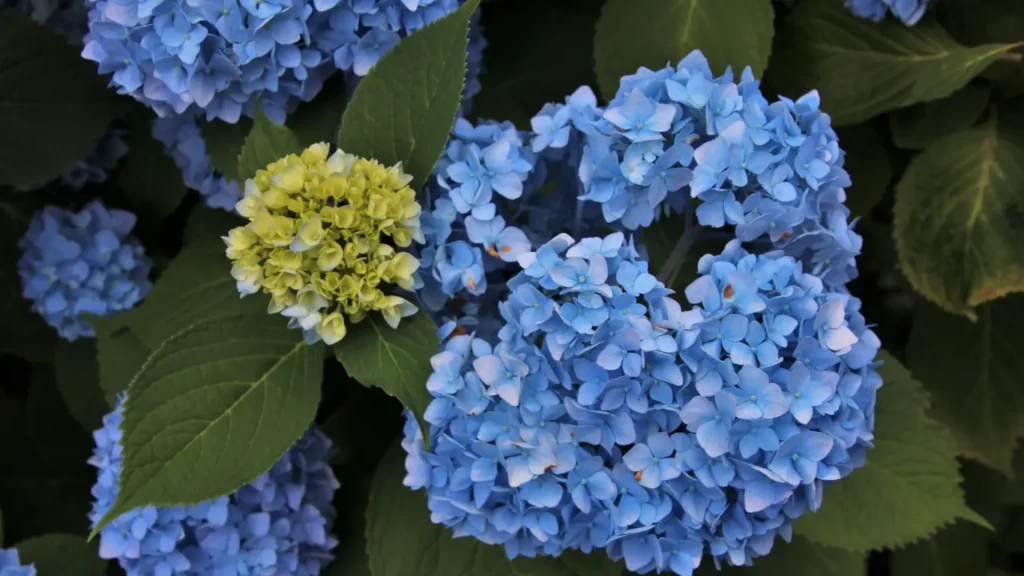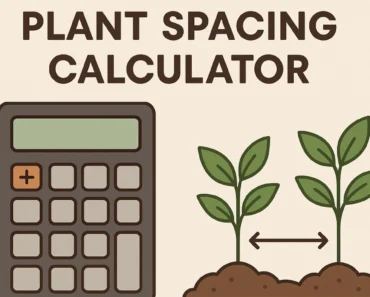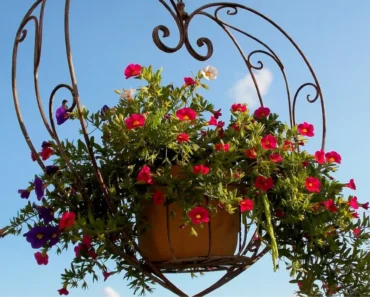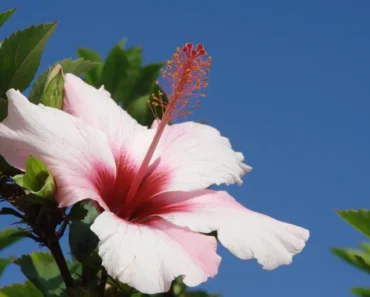
Planting hydrangeas at the perfect moment is the secret to vigorous growth and breathtaking blooms. This comprehensive guide demystifies the ‘when,’ providing expert advice for every climate and hydrangea type, ensuring your plants thrive from day one. Understanding when to plant hydrangeas can mean the difference between a struggling shrub and a spectacular garden centerpiece.
Table of Contents
The Absolute Best Times to Plant Hydrangeas: Quick Summary
Here’s everything you need to know about the best time to plant hydrangeas at a glance:
• Optimal Seasons: Fall (6+ weeks before first hard frost) and Early Spring (after last hard frost) are universally best • Fall Advantage: Cool soil + adequate moisture = strong root establishment before winter dormancy • Spring Advantage: Ideal for very cold climates; provides full growing season ahead for establishment • Critical Avoidance: Never plant in peak summer heat or when soil is frozen/waterlogged • Key Factors: Soil temperature (not just air), local frost dates, and hydrangea type matter most
This timing strategy ensures optimal hydrangea care planting time for maximum success rates.
Why Timing is Everything: The Plant Science of Hydrangea Establishment
Understanding the science behind optimal planting times transforms you from a hopeful gardener into a hydrangea expert. The best time to plant hydrangeas isn’t arbitrary—it’s based on how these shrubs naturally grow and establish themselves.
Root System Development: The Race Against an Unforgiving Clock
Hydrangeas follow a predictable energy cycle that smart gardeners can leverage. During cool weather, these plants focus their energy on developing robust root systems rather than producing showy foliage and flowers. This root-first approach creates the foundation for spectacular blooms in future seasons.
When you plant during optimal windows, you’re working with this natural cycle. Cool soil temperatures between 50-65°F (10-18°C) trigger aggressive root growth without the stress of supporting heavy top growth simultaneously.
Minimizing Transplant Shock: Gentle Transitions for Tender Plants
Transplant shock occurs when plants struggle to absorb enough water through their disturbed root systems to support their existing foliage. Heat stress amplifies this problem exponentially, often proving fatal to newly planted hydrangeas.
Dormant or semi-dormant planting eliminates most transplant shock because the plant isn’t actively supporting large amounts of foliage. This gentle transition period allows roots to establish before facing the demands of spring growth.
Soil Temperature vs. Air Temperature: What Really Matters Below Ground
Many gardeners make the mistake of focusing solely on air temperature when deciding when to plant hydrangeas. Soil temperature actually drives root activity and determines whether your hydrangea will establish successfully.
Soil temperatures remain more stable than air temperatures and change more gradually. Even when air temperatures fluctuate wildly, soil maintains relatively consistent conditions 4-6 inches below the surface where most feeder roots develop.
Masterclass: Fall Hydrangea Planting for Superior Spring Results
Fall represents the gold standard for hydrangea planting in most climates. This hydrangea care planting time strategy leverages natural dormancy cycles and favorable soil conditions.
The “Goldilocks Window” for Fall Planting
The perfect fall planting window opens when nighttime temperatures consistently drop below 60°F (15°C) and closes 6-8 weeks before your average first hard frost date. This timing provides enough establishment period without risking freeze damage to tender new roots.
Regional Fall Windows:
- Northern zones (3-5): Late August to mid-September
- Temperate zones (6-7): September to mid-October
- Southern zones (8-10): October to November
Step-by-Step Fall Planting Protocol
- Soil Temperature Check: Ensure soil reads 50-65°F (10-18°C) at 4-inch depth
- Deep Watering: Saturate planting area 24 hours before planting
- Root Preparation: Gently tease apart circled roots without damaging main structure
- Planting Depth: Set crown at soil level, never deeper
- Initial Watering: Apply 2-3 gallons slowly around root zone
- Mulch Application: 3-4 inch layer, keeping mulch 6 inches from stem
Fall Planting Pros: Deconstructed
Warm soil + cool air combination: Soil retains summer warmth while cooler air reduces water stress, creating ideal establishment conditions.
Reduced pest and disease pressure: Most harmful insects and fungal pathogens are less active during fall months.
Winter root development: Roots continue growing slowly through winter in zones 6+, creating massive head start for spring.
Natural moisture availability: Fall typically brings increased rainfall and humidity levels.
Fall Planting Cons & Mitigation Strategies
Risk of early freeze: Protect young plants with frost cloth if unexpected temperature drops threaten tender roots.
Limited nursery selection: Call ahead to ensure availability of desired varieties.
Shorter establishment window: Monitor soil moisture carefully as plants can’t signal water stress through wilting when dormant.
Masterclass: Spring Hydrangea Planting for a Season of Growth
Spring planting works exceptionally well in harsh winter climates where fall-planted hydrangeas might struggle with extreme cold. This best time to plant hydrangeas approach maximizes growing season length.
Identifying True Spring: Beyond the Calendar Date
Real planting season begins when:
- Soil consistently measures above 50°F (10°C) at 4-inch depth
- Nighttime temperatures remain above freezing for 7+ consecutive days
- Soil moisture is adequate but not waterlogged
- Local weather patterns suggest stable conditions ahead
Step-by-Step Spring Planting Protocol
- Frost Date Verification: Wait 2-3 weeks after average last frost date
- Soil Workability Test: Soil should crumble in hand, not form sticky balls
- Gradual Acclimatization: If plant was indoor-grown, introduce to outdoor conditions over 7-10 days
- Strategic Timing: Plant during overcast period or late afternoon to reduce immediate sun stress
- Establishment Watering: Daily monitoring for first 2-3 weeks as temperatures rise
Spring Planting Pros: Deconstructed
Full growing season advantage: Plants have entire spring and summer to establish before facing winter stress.
Peak nursery availability: Widest selection of varieties and healthiest specimens typically available.
Active growth monitoring: Easy to observe plant response and adjust care accordingly.
Ideal soil conditions: Spring soil workability is typically excellent after winter moisture.
Spring Planting Cons & Mitigation Strategies
Late frost risk: Keep frost cloth handy for unexpected temperature drops that could damage tender new growth.
Unpredictable spring weather: Be prepared to provide supplemental watering during dry spells or temporary shade during heat waves.
Competition from weeds: Spring planted hydrangeas face increased weed pressure requiring more maintenance.
Precision Planting: Hydrangea Timing by USDA Hardiness Zone
Your USDA Hardiness Zone dictates frost dates and overall climate patterns, critically impacting the ideal when to plant hydrangeas strategy for your specific location.
| Zone | Avg. Last Frost | Avg. First Frost | Optimal Spring Window | Optimal Fall Window | Critical Notes |
|---|---|---|---|---|---|
| 3-4 | Mid to Late May | Early to Mid September | Late May – Early June | Late August – Early September | Very short window; prioritize spring |
| 5-6 | Early to Mid May | Mid to Late October | Mid May – Early June | September – Early October | Good flexibility both seasons |
| 7-8 | Early to Mid April | Late October – November | Late April – May | September – October | Fall preferred in zone 8 |
| 9-10 | February – March | December – January | March – April | October – December | Fall/winter planting essential |
Planting Hydrangeas in Cold Zones (Zones 3-5)
Cold zone gardeners should emphasize late spring planting to maximize establishment time before harsh winters. The short growing season demands strategic timing to ensure adequate root development.
Specific Challenges:
- Severe winter temperatures can kill inadequately established plants
- Limited growing season puts pressure on establishment timeline
- Soil may remain frozen later than air temperature suggests
Success Tips:
- Plant on slight mounds to improve drainage and soil warming
- Use zone-appropriate varieties like ‘Annabelle’ or hardy panicle types
- Apply winter protection (burlap, mulch mounds) for first winter
- Consider container growing for ultimate flexibility
Planting Hydrangeas in Temperate Zones (Zones 6-7)
Temperate zones offer the most flexibility for hydrangea care planting time, with both fall and spring windows providing excellent results. Success depends more on specific weather patterns than strict calendar dates.
Key Considerations:
- Microclimates within these zones can vary significantly
- Urban heat islands may extend growing seasons
- Elevation changes affect frost dates dramatically
- Fall planting generally produces superior long-term results
Optimal Strategy:
- Monitor 10-day weather forecasts before planting
- Fall plant when possible, spring plant in areas with harsh winters
- Pay attention to local micro-climate conditions
- Establish windbreaks for exposed locations
Planting Hydrangeas in Warm/Hot Zones (Zones 8-10+)
Hot climate gardeners must avoid summer planting entirely, making fall through early winter the primary best time to plant hydrangeas. Summer heat stress can quickly kill newly planted specimens.
Essential Requirements:
- Plant only during cooler months (October through February)
- Provide afternoon shade in all but coastal areas
- Ensure consistent moisture without waterlogging
- Choose heat-tolerant varieties like oakleaf hydrangeas
Success Strategies:
- Plan purchases for fall delivery rather than impulse spring buying
- Prepare planting sites with improved drainage and organic matter
- Install irrigation systems before planting
- Consider container growing for ultimate control
Hydrangea Variety Nuances: Slight Timing Adjustments for Specific Types
While general timing rules apply universally, specific hydrangea types have subtle preferences that can optimize your when to plant hydrangeas strategy.
Hydrangea macrophylla (Bigleaf Hydrangeas)
These popular mophead and lacecap varieties show sensitivity to late spring frosts on new growth and developing buds. Fall planting provides better protection for next season’s blooms.
Timing Preference: Fall planting in zones 6+, late spring in zones 5 and colder
Hydrangea paniculata (Panicle Hydrangeas)
The most adaptable and forgiving hydrangea type, panicle varieties like ‘Limelight’ and ‘Little Lime’ tolerate timing flexibility better than other types.
Timing Preference: Either fall or spring work equally well in most zones
Hydrangea arborescens (Smooth Hydrangeas)
Hardy native varieties like ‘Annabelle’ handle timing variations exceptionally well and recover quickly from establishment stress.
Timing Preference: Very flexible; can even handle early summer planting with adequate care
Hydrangea quercifolia (Oakleaf Hydrangeas)
These southeastern natives benefit most from fall planting, which allows root establishment before their spectacular autumn display and provides better drought tolerance.
Timing Preference: Strongly favors fall planting for best long-term performance
Climbing Hydrangeas
These vigorous vines need immediate structural support and benefit from fall planting near their intended climbing surface.
Timing Preference: Fall planting when support structures are ready
Critical Error Avoidance: When You Absolutely SHOULD NOT Plant Hydrangeas
Understanding when NOT to plant is equally important as knowing the optimal hydrangea care planting time.
Mid-Summer Blight: The Dangers of Planting in Peak Heat
Temperature Thresholds: Never plant when daytime temperatures exceed 85°F (29°C) for consecutive days or when nighttime temperatures remain above 70°F (21°C).
Why It Fails: Excessive transpiration demand overwhelms newly planted root systems, causing rapid decline even with constant watering.
The Frozen Ground Folly: Why Winter Planting (in Cold Zones) is a No-Go
Soil Conditions: Frozen or repeatedly freeze-thaw cycling soil prevents proper root-to-soil contact and can damage tender roots.
Alternative: If you acquire plants during winter, store them in an unheated garage or basement until spring planting season arrives.
Waterlogged Woes: Avoiding Planting in Saturated or Poorly Draining Soil
Drainage Test: Dig a hole 12 inches deep and fill with water. If water remains after 24 hours, delay planting until drainage improves.
Root Rot Risk: Hydrangeas require well-draining soil; waterlogged conditions quickly cause fatal root rot.
Impulse Buys: What to Do if You Acquired a Hydrangea at the “Wrong” Time
Container Strategy: Keep nursery plants in their containers, gradually increase pot size if needed, and provide appropriate seasonal care until optimal planting window arrives.
Indoor Overwintering: Small specimens can winter indoors in cool, bright locations before spring planting.
Your Top Hydrangea Planting Time Questions Answered (Expert FAQ)
Can I plant hydrangeas in July or August?
July and August represent the worst possible months for hydrangea planting in most climates. Peak summer heat stress overwhelms newly planted root systems, often resulting in plant death despite intensive care. Wait until September in northern zones or October in southern zones for fall planting success.
How late in the fall is too late to plant hydrangeas in Zone 5?
Zone 5 gardeners should complete fall hydrangea planting by mid-September, allowing 6-8 weeks before average first hard frost. Planting after early October risks inadequate root establishment before winter dormancy, potentially causing plant loss during harsh winter conditions.
What’s the ideal soil temperature for planting hydrangeas?
The optimal soil temperature range for hydrangea planting is 50-65°F (10-18°C) measured at 4-inch depth. Use a soil thermometer rather than relying on air temperature, as soil temperatures change more gradually and accurately reflect root zone conditions.
I missed the fall window; is it better to wait until deep spring or plant very early spring?
If you missed the optimal fall window, wait until 2-3 weeks after your average last frost date for spring planting. Early spring planting in marginal conditions often results in frost damage to emerging growth, while patient timing ensures better establishment success.
Do I need to water hydrangeas differently if planted in fall vs. spring?
Fall-planted hydrangeas require less frequent but deeper watering as they enter dormancy, while spring-planted specimens need consistent moisture monitoring as temperatures rise and growth accelerates. Fall plants may only need weekly watering, while spring plants often require every 2-3 days initially.
How can I find my accurate local first and last frost dates?
Consult your local cooperative extension office or use the National Weather Service’s historical climate data for your specific zip code. Garden centers and experienced local gardeners also provide valuable real-world timing insights for your immediate area.
What are the visual signs that it’s a good or bad time to plant in my garden?
Good timing signs: Consistent soil moisture without waterlogging, soil that crumbles rather than clumps when squeezed, stable weather patterns in forecast, and absence of extreme temperature predictions.
Bad timing signs: Bone-dry or waterlogged soil, frozen ground, heat wave predictions, or late/early frost warnings in extended forecasts.
Your Path to Thriving Hydrangeas: A Final Planting Time Checklist
Success with hydrangeas starts with perfect timing. Use this checklist to ensure your when to plant hydrangeas strategy sets your garden up for spectacular results:
✓ Verify optimal timing: Fall (6+ weeks before frost) or spring (2-3 weeks after last frost)
✓ Check soil temperature: 50-65°F (10-18°C) at 4-inch depth
✓ Confirm soil drainage: Water should drain within 24 hours of testing
✓ Identify your USDA zone: Match timing recommendations to your specific climate
✓ Consider hydrangea type: Adjust timing for variety-specific preferences
✓ Prepare aftercare plan: Watering, mulching, and protection strategies ready
✓ Monitor weather forecast: 10-day outlook shows stable conditions
The best time to plant hydrangeas in your garden depends on your unique combination of climate, soil conditions, and hydrangea variety. By following this zone-specific timing guide and understanding the science behind optimal hydrangea care planting time, you’re equipped to create the stunning hydrangea display you’ve always envisioned.
Ready to transform your garden with properly timed hydrangea planting? Your future self will thank you for taking the time to plant at the perfect moment—when your hydrangeas can establish strong roots and reward you with years of spectacular blooms.
Author
George Wine is a seasoned gardening expert with over 20 years of experience in the field of horticulture. His passion for plants and nature has driven his career, where he has honed his skills in various aspects of gardening, from landscape design to plant care. George holds a Master of Science in Horticulture from the University of California, Davis (UC Davis), a prestigious institution known for its research and advancements in plant science.
Throughout his career, George has worked with a diverse range of clients, offering tailored solutions to enhance outdoor spaces and create thriving gardens. His knowledge and expertise allow him to provide invaluable advice, ensuring that both novice and experienced gardeners achieve their gardening goals. Whether you’re looking for tips on sustainable gardening practices, innovative design ideas, or advice on specific plant species, George is here to help you cultivate the garden of your dreams.




